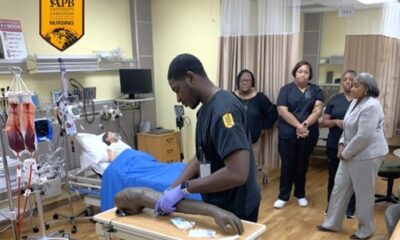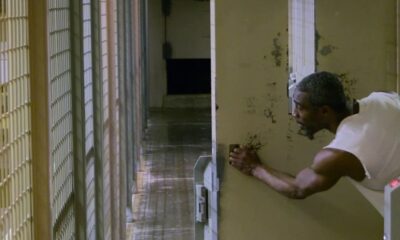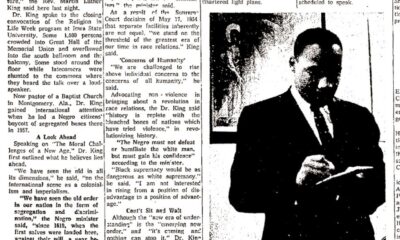Featured
The Biggest COVID Questions of the Day

H.E.L.P. is on the way, literally.
The US Senate Committee on Health, Education, Labor & Pensions, known as the HELP Committee, is set to ask our leading scientists the big COVID-19 questions of the day.
In a May 12th hearing, dubbed “COVID-19: Safely Getting Back to Work and Back to School,” the witnesses are four members of the White House coronavirus task force, largely responsible for our nation’s response to the coronavirus. Testifying remotely are Anthony Fauci, MD, director of the National Institute of Health; Robert Redfield, MD, director of the US Centers for Disease Control and Prevention; Admiral Brett Giroir, MD, Assistant Secretary for Health, US Department of Health and Human Services; and Stephen Hahn, MD, Commissioner of the Food and Drug Administration.
All four physicians are in quarantine due to exposure to a White House staffer who tested positive. That begs the biggest question: if the White House, the most secure office in the nation, have people in quarantine, how are less secure workplaces without rapid tests and temperature checks ready to reopen?
But this question gets ahead of things. People who have no symptoms and test negative can shed the virus, spreading the disease. The witnesses need to share some information that has been kept secret for too long. Senators will support medical staff by pressing the witnesses to tell the public: what is the asymptomatic transmission rate?
Germany openly shares data on the spread among people without COVID-19 symptoms. To reopen, the country has decided the overall transmission rate must be less than one, meaning a person will spread the disease to less than a person. Sounds reasonable. But nowhere can you find information about this data in the United States. What is the transmission rate in the U.S.?
Ideally, during a pandemic stay at home orders allow elected and public health officials time to set up public health systems that will keep us safe. This means boosting the health care infrastructure so that we can routinely test and track people who are infected with the virus. Now more than ever federal guidelines on testing and tracing from the CDC – a job delegated to the states – would be helpful. Senators could help state public health officials by prying loose the CDC guidelines from any sticky bureaucratic webs.
Without a national road map on testing and tracing, we risk one small cluster after another becoming infected. We risk more shortages of ventilators, personal protective equipment, such as masks, gloves and gowns, and worsening shortages of medical personnel.
Before the White House outbreak – one of the President’s valet and staffer were infected with COVID-19, the previous biggest question was: when can we unlock the economy? The short answer is when we have a vaccine in 12 to 18 months in the best-case scenario. That begs the question: why are we not pooling our resources with other nations as part of an international coalition to find a vaccine? Why are we going it alone?
Many people mistakenly believe that the best road map to reopening finds the right balancing act between our life and livelihood. As an emergency medicine physician and businesswoman, I know that this false tradeoff ignored many realities. For example, some states require businesses to open at 50 percent. Most employers cannot reopen profitably at 50 percent. While closed, they had to pay rent and utilities. Reopening increases expenses and adds new ones. Now they are responsible for staffing and personnel protective equipment already in short supply. Do we have enough PPE for businesses to reopen?
There are too many unanswered questions for the public to have confidence in any reopening strategy. Information is empowering. The May 12th hearing is an opportunity to build public confidence.
Valda Crowder, M.D., MBA, is an emergency medicine physician who practices medicine in hospitals throughout the United States.

-

 Black History5 months ago
Black History5 months agoThe untold story of a Black woman who founded an Alabama hospital during Jim Crow
-

 Featured8 months ago
Featured8 months ago‘No Closure’ In Town Where Five Black Residents Were Either Murdered, Died Suspiciously Or Are Missing
-

 Black History9 months ago
Black History9 months agoBlack History Lost and Found: New Research Pieces Together the Life of Prominent Texas Surgeon and Activist
-

 Featured9 months ago
Featured9 months agoFounder of “The Folding Chair” Podcast Calls Montgomery’s Brawl ‘Karma’
-

 Featured8 months ago
Featured8 months agoThousands ‘Live Their Dream’ During National Black Business Month
-

 Featured10 months ago
Featured10 months agoJuneteenth And ‘246 Years Of Free Labor’ Are Key To Conversations About Reparations









